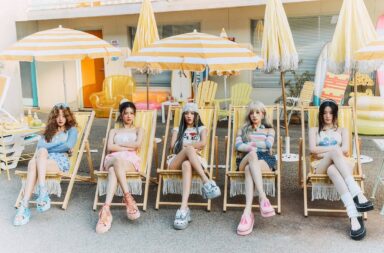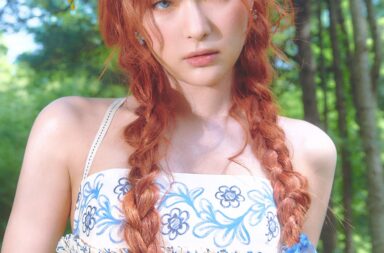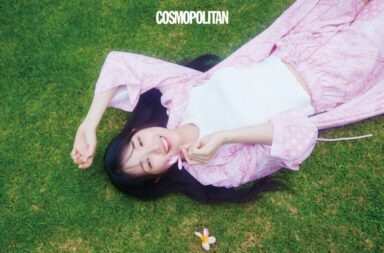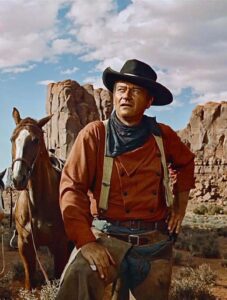
I grew up in the United States in a family of cinephiles. One of the first films I fell for was The Searchers. Full of heart-pounding suspense, visual beauty, and haunting moral ambiguity, it is a marvelous feature and a Western classic. In many ways The Searchers represents the best of what the genre has to offer. It also contains several of the Western’s worst elements.
Revisiting the movie when I was older and just a bit wiser made that terribly clear. The Searchers’ depictions of Indigenous North Americans, while containing far greater complexity than many other Westerns, are often uninformed and offensive. It doesn’t help that one of the primary Indigenous characters is portrayed by a white actor in brown face. Yikes.
The Searchers is also guilty of whitewashing. The film’s protagonist was based on a real figure, a Black man named Britt Johnson. But was actor John Wayne Black? No, he was not. Consequently, The Searchers is part of a Western genre tradition of erasing the contributions and existence of people of color. This completely misrepresents the realities of the historical period which inspired Westerns, a time populated and shaped by people of hugely diverse backgrounds. Indeed, some of the genre’s most recognizable aesthetics were drawn from the Spanish, Mexican, and Indigenous cowboys that predated white cowboys. You would never know it by looking at a typical Western.
A powerful mix of nostalgia, affection, shame, and cringe: that’s how I now feel about The Searchers, and the Western genre in general. So when Wild West aesthetics started appearing frequently in K-pop comebacks, I was apprehensive. Then, as wildly inventive and wickedly fun Western-inspired releases accumulated over the last year, I became pleasantly surprised.
K-pop cowboys and cowgirls aren’t unprecedented. However, what has occurred in the past 12 months feels like a noteworthy trend. Western aesthetics and K-pop are colliding, with often exhilarating results. The motivations behind this craze are intriguing, as are the potential pitfalls that await idols who choose to head West. Most tantalizing of all is what comes next. Will the Wild West become the newest addition to K-pop’s stable of favorite concepts? Or will its popularity be brief?
The Western aesthetics which K-pop has embraced are largely invented. Certainly, they have roots in history. In reality though, the true birthplace of the Western’s most recognizable sights and sounds are the films, television, books, and assorted pop culture products which propagated the Western myth.
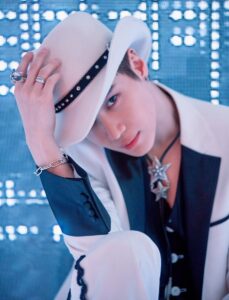
This myth wasn’t created to help people brush up on their history lessons. Instead, it pushes a quintessentially American agenda of individualism, anti-authoritarianism, and more disturbingly, white supremacy. To varying degrees, these ideas form the philosophical heart of many Westerns.
This might all seem pretty heavy, but it is crucial to remember that the main reason behind Westerns’ popularity is that they are fun. Rousing gun fights, electrifying horseback chases, memorable one-liners, and old-fashioned sentimentality are the bread and butter of the genre.
You can witness the Western’s cheeky spirit in its fashion. In the wrong setting, it can be unbearably tacky. In the right context, it is roguishly cool. SuperM certainly thought so, as Taemin wears full cowboy regalia in the MV for self-hype anthem “100”. Even outside of clearly Western-influenced comebacks, groups have been donning studded leather boots or fringed jackets for music show stages.
ONF doesn’t just showcase Western fashion in the trippy “Sukhumvit Swimming”. The MV’s train sequence plays like a scene from a Western film with a Steampunk twist. Of course, Itzy provided the most obvious recent movie homage, through the delightful “Not Shy”. AOA’s Queendom finale performance of “Sorry” also referenced the silver screen’s depictions of the Wild West, particularly in an exhilarating faux-fight scene executed by Chanmi.
If the visuals of the Western genre are made up of wide hat brims and dusty landscapes, the sounds are exemplified by trotting rhythms, twangs, and whistles. iKon’s “Dive” is a great example of the former two. A galloping beat backs the track, like the sound of a horse’s hoofs on rough roads. Haunting whistle refrains are what make Woodz’s “Love Me Harder” a tune with a Western vibe.
As fun as all these K-pop and Western hybrids may be, are they inappropriate? Idols are taking Western aesthetics and using them purely for style. Some might call that cultural appropriation.

I am inclined to think otherwise. Context is critical in determining whether something is cultural appropriation (bad) or cultural exchange (good!). This seems to lean towards cultural exchange. That many Western aesthetics are more myth than genuine culture also makes their borrowing feel less momentous. In its Wild West ventures, K-pop isn’t misusing sacred symbols, or benefiting from a style that its originators face discrimination for. Last but not least, the Western’s whitewashing tendencies make it almost subversive whenever a non-white person dons cowboy gear, as idols are now doing in spades.
That isn’t to say that idols wouldn’t benefit from a better understanding of the context of Western aesthetics, or that there aren’t cringy Western K-pop comebacks. They definitely could and there definitely are. This also isn’t me speaking on behalf of all Americans or all people. Others might find K-pop’s use of Western aesthetics offensive. That is their right. But I am cool with it, and I appreciate the unique nature of many of the resulting releases.
That uniqueness is a primary reason why K-pop has fallen so hard for the Western. K-pop is filled with idiosyncratic concepts, but idols often stick to a small selection of favorites. Among these is the rebel concept. However, with repetition comes boredom. Before you know it, the roaring motorcycles and pounding club beats that are supposed to convey revolution are putting audiences to sleep. For idols to effectively exhibit their wild side, a fresh take on rebellion is necessary. Recently, a number of K-pop producers and writers stumbled upon the same thrilling idea. It was time for K-pop to head to the Wild West.
Melding the K-pop rebel concept with the aesthetics of the American West isn’t just a refreshing option, it is a versatile one. The Western’s kitsch-factor provides opportunities for humor that other rebellious themes don’t. It also makes for a somewhat safe take on revolution, free from any real boundary-pushing. That’s what makes it a perfect choice for a group like Oh My Girl, as shown in their “Nonstop” MV. Their cowgirl outfits are tough but cute, allowing them to show a different side without shattering their sweet image.
The Western’s light-hearted roguish potential also makes it perfect for exuberant summer rebellion. SF9 proved that in their rollicking comeback “Summer Breeze”. Itzy, ONF, and Woodz also jumped aboard the Wild West wagon this summer.
If Western aesthetics bring a welcome spark of the new to the rebel concept, they can serve the same purpose for the girl crush concept. One of the earliest signs of the Wild West trend was during Queendom’s finale last fall. Both Mamamoo and AOA showcased fierce Western-influenced performances. The two groups would shortly revisit the Western genre, with Solar’s solo release “Spit it Out” and AOA’s “Come See Me” respectively.
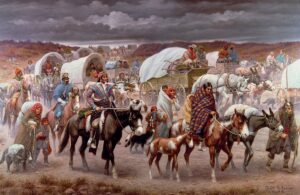
Touches of the Wild West can reinvigorate some of K-pop’s perennial favorite concepts. That is a definite win for the industry. But what are the potential downsides of this new inspiration?
Again, the heavy history of the Western genre rears its ugly head. Among the many shames which haunt the Western, one idea and its consequences are particularly troubling. That idea is manifest destiny. This was a philosophy that Americans had a God-given right to go West and settle the entirety of North America. And by Americans, the proponents of manifest destiny meant white-Americans.
This dogma was used to justify the forced removal of Indigenous North Americans from their ancestral lands. What followed was a series of betrayals, mass displacements, and violent outbursts, resulting in the nearly successful genocide and cultural destruction of Indigenous North Americans. Today, the descendants of the survivors of these atrocities still face discrimination and systemic oppression. The devastation that the believers of manifest destiny wrought is one of the darkest parts of United States history.
The shadow of manifest destiny lingers over the Western genre. One of the clearest ways it shows itself is in the negative stereotypes of Indigenous North Americans which dominate fictional depictions of the Wild West. Here is where K-pop can get into hot water. If idols draw inspiration from the Western genre without understanding and reckoning with its historical context, they can end up taking on not just its charming aesthetics, but also its racist qualities.
An example of this is (G)I-dle’s “Dumdi Dumdi”. The song cleverly uses Western influences to enliven a girl crush summer rebellion concept. But the track is tainted by its inclusion of offensive Indigenous stereotypes. The chorus’ drumming dance-move and rhythmic shouts, and a sequence where the members encircle a campfire while dancing are at fault. These elements evoke numerous degrading depictions of Indigenous peoples as whooping, drumming, and wildly dancing barbarians. Take, for instance, the infamous sequence in Disney’s Peter Pan. Knowingly or not, “Dumdi Dumdi” perpetuates racist caricatures, and that is not acceptable.
The moral of this story is that fringe is cool, and racism is not. Sometimes, the two are more closely related than you might think. That’s why it is always advantageous to do your background research before referencing something. K-pop should learn that lesson if it wants to enjoy the hot sunlight of Western skies, but avoid getting burned.
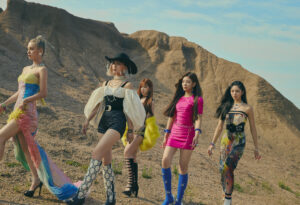
On a way less serious note, the Western genre is also limited by its relatively small set of aesthetic cues. Cowboy hats and whistle riffs are great, but how many times can you use them before they become tired? This dilemma would seem to doom K-pop’s relationship with the Western to fling status.
Then again, K-pop has a history of continually re-inventing seemingly narrow concepts, such as the school uniform concept, or the video-game-inspired MV. Both of these motifs come with a tiny set of visual and sonic indicators, yet K-pop never seems to run out of new takes. Perhaps the Western will be the newest surprise K-pop concept superstar.
Going forward, Western-influenced comebacks likely won’t continue appearing as frequently as they have over the past year. However, this concept also doesn’t seem headed for the graveyard anytime soon. In future, idols should be mindful of the heavy history behind the jangly spurs. If they can do that, then yeehaw! So far, the unlikely meeting of K-pop and the aesthetics of the American West has birthed some astoundingly inventive and entertaining releases. I, for one, am excited to see what this pairing produces next.
(Atlantic, Encyclopedia Britannica, Everyday Feminism, Guardian, History, Merriam-Webster, National Geographic Education Blog, Take, Time, United to End Genocide, USA Today, YouTube[1][2][3][4][5]. Images via C.V. Whitney Pictures, FNC Entertainment, JYP Entertainment, Mnet, Robert Lindneux, SM Entertainment, Warner Bros. Entertainment Inc., Woolaroc Museum & Wildlife Preserve, WM Entertainment)
